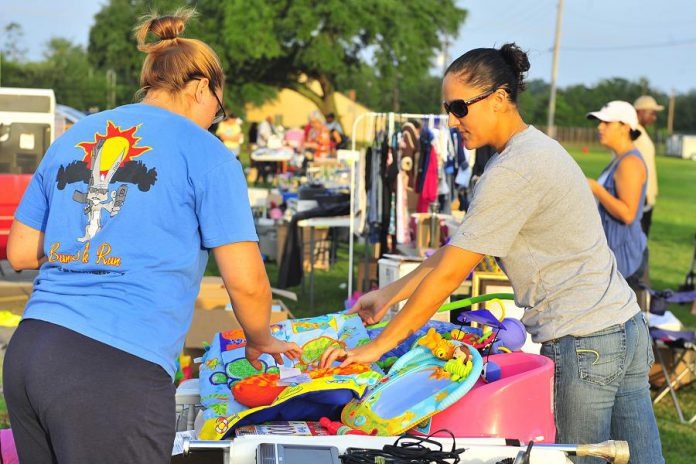
Remember the days before internet classifieds?
While still in university, I had a bad experience with a roommate and found myself with an empty room and a landlord looking for money. With limited cash, I wound up at the newspaper office to place a classified ad. Within hours of the paper hitting the streets, my phone began to ring with potential roommates.
A shadow of its former self, the newspaper classifieds page was the original marketplace for consumers who wanted to buy, sell or trade used goods, fill jobs or, in my case, rooms. The classifieds section of The Peterborough Examiner is still one of the best places to look if you’re buying or selling.
With the advent of free online classifieds, much of the action has moved to the internet. With a few clicks, you can find everything from used appliances to clothing to electronics and everything in-between.
The online marketplace has grown so much in recent years, it’s been tagged with the moniker “second-hand economy”; an accurate title, as Canadians are spending close to $30 billion each year on used items they found through classifieds, both print, online and other means like second-hand stores.
In a report commissioned by Kijiji, one of the internet’s biggest names in the classifieds business, researchers from the University of Toronto and Montreal’s Observatoire de la Consommation Responsable reveal that second-hand goods spending by Canadians contributes close to $34 billion to the country’s gross domestic product (GDP) in Canada by diverting dollars away from items that would otherwise be imported.
Other benefits of the second-hand economy include job creation and a reduction in environmentally harmful waste, the study shows.
The report showed some big numbers relating to the sales of used goods. Annual sales of second-hand durable and semi-durable goods in Canada are now estimated to be $30 billion, or about 15 per cent of the value of new goods purchased.
On average, each Canadian grants a second life to 76 products each year across 22 product categories, through buying, selling, trading and donating via peer-to-peer channels such as classifieds, donations, local thrift shops, and more. The average family of four in Canada apparently saves approximately $1,150 per year by buying second-hand goods.
Speaking from an economic standpoint, the second-hand economy in this country is keeping money that would have been spent on imported goods here at home. According to the report, more than 80 per cent of the durable and semi-durable goods bought by Canadian consumers are imported rather than made in Canada. Spending in the second-hand goods market contributes approximately $34 billion to Canada’s GDP that would otherwise flow out of the country. This means that extending the useful life of these goods is actually good for the local economy, the report authors say.
Kijiji: Why second-hand should come first
The second-hand economy is also a boon for government coffers. According to the report, each $1 billion of second-hand sales contributes about $340 million to government revenue, through the taxation of the income increases related to the diversion of spending away from imported durable and semi-durable goods.
At the current rate of spending, with the total contribution to GDP, the second-hand market can be said to support approximately 300,000 jobs in the Canadian economy.
Beyond the economic impacts of buying used items, there are the obvious environmental benefits. The environmental virtues of extending the life of products through the second-hand economy, in terms of reducing harmful impacts associated with manufacturing and distributing new things, and discarding old items well before their time.
According to Statistics Canada, every year Canadian consumers spend close to $200 billion on new durable and semi-durable consumer goods, with the cost of depreciation pegged at $100 billion, a signal that one of the study’s authors says points to goods being discarded prematurely.
“By making products last longer, and getting more out of them, consumers can maintain a high standard of living while staying within the bounds of environmental sustainability,” says Peter Spiro, Executive Fellow of the Mowat Centre for Policy Innovation at the University of Toronto and one of the report’s authors. “The Second-Hand Economy is a remarkably simple, and essentially painless, way to reduce Canada’s carbon footprint.”
The findings of this report point to a lot of facts we already knew. Buying used is the smart thing to do. It has big environmental benefits by keeping items out of the landfill, it benefits our economy, and it keeps money that otherwise would have been spent on imports here at home.


























